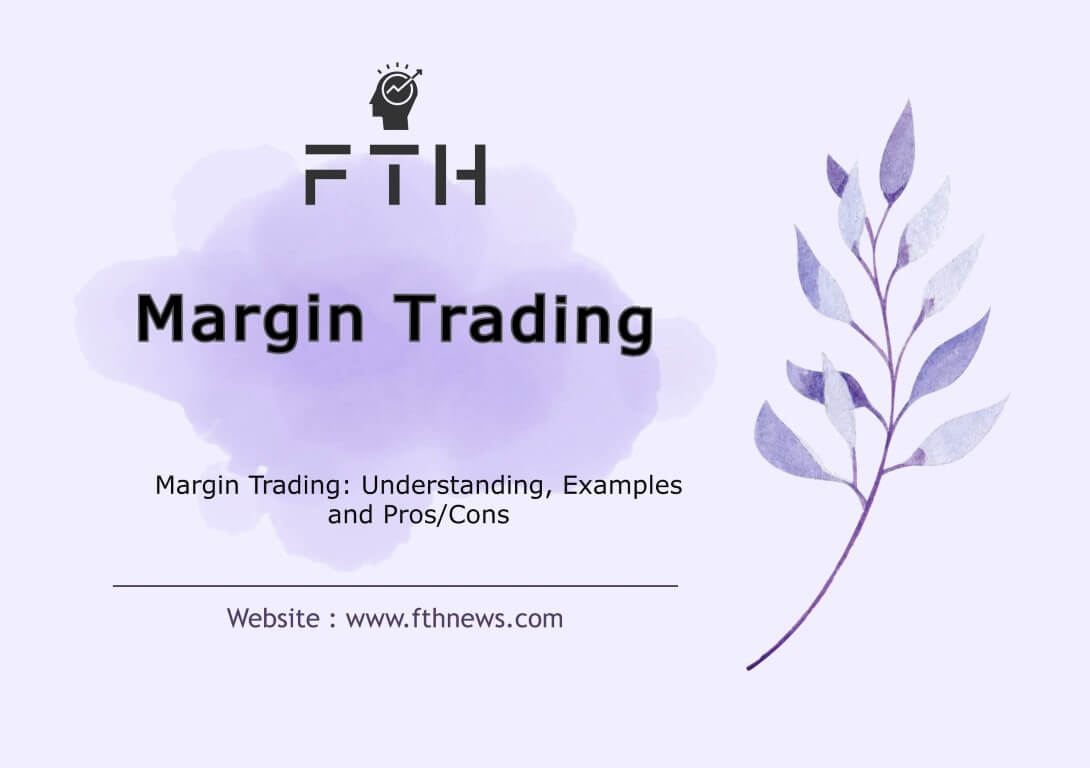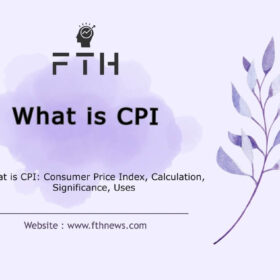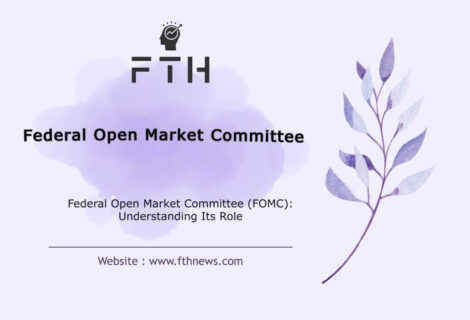
Margin Trading: Understanding, Examples, and Pros/Cons
Margin trading has emerged as a popular strategy for traders aiming to amplify their profitability with limited initial capital. However, this powerful tool comes with inherent risks, especially in volatile markets like cryptocurrencies. In this comprehensive guide, we’ll delve into the intricacies of margin trading, covering key concepts such as initial margin, maintenance margin, margin calls, position liquidation, and the difference between isolated and cross margin. Our focus will be on providing practical insights, including a step-by-step guide on how to calculate margin levels and execute margin trades on the Binance exchange.
Understanding Margin Trading
Margin trading is a financial strategy that empowers traders to leverage borrowed funds to increase their market exposure beyond their initial capital. The primary purpose is to amplify potential profits in trading activities. However, this strategy comes with inherent risks, especially when market movements are unpredictable.
In margin trading, traders use a combination of their own funds and borrowed capital to execute larger trades than their account balance would typically allow. The borrowed funds act as leverage, magnifying both potential gains and losses. While this approach can enhance profitability, it requires a nuanced understanding of risk management due to the increased exposure to market fluctuations.
How Margin Trading Works in Cryptocurrency, Stocks, and Commodities
In summary, whether in cryptocurrencies, stocks, or commodities, margin trading provides a powerful tool for traders to potentially increase profits. However, mastering this strategy requires a comprehensive understanding of market dynamics, risk management principles, and the specific nuances of each asset class.
Cryptocurrency Margin Trading
In the cryptocurrency market, margin trading has gained immense popularity, providing traders with the ability to access more significant positions without a substantial upfront investment. Platforms like Binance, Bitfinex, and others offer various leverage options, allowing users to open both long and short positions.
Cryptocurrency margin trading involves borrowing funds from a platform or other users, often expressed as a leverage ratio (e.g., 10x, 20x). Traders can then use these borrowed funds to enter larger positions than their actual account balance. However, the volatile nature of the cryptocurrency market makes risk management a critical component of successful margin trading in this space.
Stock Margin Trading
In traditional stock markets, margin trading is facilitated by brokerage firms. Investors can borrow funds from the broker to buy stocks, with the purchased stocks acting as collateral for the loan. The initial margin requirement is set by the broker, determining the percentage of the total transaction value that the investor must provide in cash.
Stock margin trading allows investors to amplify their returns by leveraging borrowed capital. However, it also exposes them to higher risks, especially if the market moves against their predictions. Brokerage firms may issue margin calls or liquidate positions if the account falls below the required maintenance margin.
Commodities Margin Trading
Commodities, such as gold, oil, and agricultural products, also offer opportunities for margin trading. Similar to stock and cryptocurrency markets, commodities margin trading involves using borrowed funds to enter larger positions.
Traders in the commodities market can take advantage of price movements by using leverage. However, it’s essential to consider the unique dynamics of each commodity market, as factors like geopolitical events, weather conditions, and global economic trends can significantly impact prices.
What is Margin?
Margin refers to the additional funds or collateral required to facilitate financial transactions, particularly in the context of trading and investments. It allows individuals or entities to engage in activities that would otherwise require a more substantial upfront capital investment. Margin is prevalent in various financial markets, such as stocks, cryptocurrencies, and commodities, providing opportunities for leverage.
Margin in Finance and Business
In the broader financial and business context, margin takes on different meanings:
1. Profit Margin:
- In accounting and finance, profit margin is a key metric that indicates the profitability of a business. It represents the percentage of revenue that translates into profit after accounting for expenses.
2. Gross Margin:
- Gross margin is a measure of a company’s profitability, revealing the percentage of revenue that exceeds the cost of goods sold. It provides insights into a company’s production efficiency and pricing strategy.
3. Operating Margin:
- Operating margin assesses the profitability of a company’s core operations, excluding interest and taxes. It is a crucial metric for evaluating operational efficiency and management effectiveness.
Margin in Investments
In the realm of investments, margin serves a different purpose:
1. Margin Trading:
- Margin trading allows investors to borrow funds to increase their market exposure. In this scenario, margin is the borrowed capital that amplifies both potential gains and losses. This strategy is commonly employed in various financial markets, including stocks, cryptocurrencies, and commodities.
2. Margin Account:
- A margin account is a type of brokerage account that enables traders and investors to borrow funds from the broker to execute trades. The securities held in the account act as collateral for the borrowed capital.
3. Initial Margin and Maintenance Margin:
- In margin trading, the terms initial margin and maintenance margin are crucial. Initial margin is the percentage of the total order value that must be provided as collateral to open a position. Maintenance margin is the minimum amount required to keep a position open after it’s been established.
4. Margin Call:
- A margin call occurs when the value of securities in a margin account falls below the maintenance margin. Brokers may request additional funds or liquidate positions to restore the required margin, protecting both the trader and the broker from excessive losses.
Understanding the multifaceted nature of margin across finance and investments is essential for making informed decisions. Whether evaluating a company’s profitability or engaging in margin trading, a nuanced grasp of margin concepts contributes to effective financial management and risk mitigation.
Significance of Margin in Trading
Understanding the significance of margin in trading is paramount for investors seeking to optimize their capital utilization and potentially enhance returns. Margin acts as a financial lever, allowing traders to control larger positions with a fraction of the total transaction value. This leverage can amplify both gains and losses, making it a powerful tool when used judiciously.
Initial Margin, Maintenance Margin, and Margin Calls
1. Initial Margin:
- Initial margin is the upfront collateral required to open a position in margin trading. It represents a percentage of the total transaction value that traders must deposit to initiate a leveraged trade. This serves as a security deposit and varies based on factors such as the asset being traded and the chosen leverage ratio.
2. Maintenance Margin:
- Maintenance margin is the minimum amount of equity that must be maintained in a trading account to keep a leveraged position open. If the account’s equity falls below this threshold due to market fluctuations, a margin call is triggered.
3. Margin Calls:
- Margin calls are warnings or demands from brokers for additional funds when the equity in a margin account drops below the maintenance margin. Traders must promptly deposit more funds to meet the margin requirements, preventing the forced liquidation of their positions. Failure to meet a margin call may result in the automatic closure of positions by the broker.
Isolated vs. Cross Margin
1. Isolated Margin:
- Isolated margin allows traders to allocate a specific amount of margin to each open position independently. In this mode, the margin assigned to one position does not affect the margin allocated to other positions. If a position faces liquidation, only the margin assigned to that particular trade is at risk, safeguarding the rest of the trading account.
2. Cross Margin:
- Cross margin, on the other hand, aggregates the entire margin balance of a trading account, making it available to all open positions collectively. While this provides more flexibility and reduces the likelihood of liquidation for individual positions, it exposes the entire account to potential losses. Profits and losses from one position can offset those of another.
Calculating Margin Levels
The formula for calculating margin level is crucial for assessing the health of a margin account:
Margin Level=(Equity / Margin Used )×100
- Equity: The total value of a trader’s account, including profits and losses.
- Margin Used: The amount of margin utilized in open positions.
A margin level above 100% indicates a healthy account, while levels below 100% signal potential risks of margin calls or liquidation.
Maintaining a healthy margin level is vital for traders to avoid margin calls and liquidation.
Practical Examples for Margin Calculation
Let’s explore practical examples to illustrate the margin calculation process:
Example 1: Long Position
Suppose a trader initiates a long position in cryptocurrency, buying 1 Bitcoin at a leverage of 10:1 with a current market price of $50,000.
- Margin Used = (Position Size / Leverage) = (1 BTC * $50,000 / 10) = $5,000
- Equity = Initial Balance – Margin Used = $10,000 – $5,000 = $5,000
- Margin Level = (Equity / Margin Used) * 100 = ( $5,000 / $5,000 ) * 100 = 100%
In this scenario, the margin level is at the threshold. Further market movements could affect the margin level and potentially trigger a margin call.
Example 2: Short Position
Consider a trader taking a short position in stocks, selling 100 shares of a company at $50 per share with a leverage of 5:1.
- Margin Used = (Position Size / Leverage) = (100 shares * $50 / 5) = $1,000
- Equity = Initial Balance – Margin Used = $7,000 – $1,000 = $6,000
- Margin Level = (Equity / Margin Used) * 100 = ( $6,000 / $1,000 ) * 100 = 600%
In this case, the margin level is healthy, indicating a comfortable buffer against potential adverse market movements.
Mastering the art of calculating margin is fundamental for traders navigating the dynamic landscape of leveraged trading. The margin level serves as a compass, guiding traders to assess their risk exposure and make informed decisions. By applying the margin level formula to practical examples, traders can gain hands-on insights into how their equity and margin interact, empowering them to navigate the complexities of margin trading successfully.
Understanding Leverage in Margin Trading
Leverage stands as both a powerful ally and a formidable adversary in the realm of margin trading. It’s a financial instrument that enables traders to control positions exceeding their capital, magnifying both potential profits and, notably, the inherent risks. The concept of leverage allows traders to amplify their market exposure, operating on borrowed funds to engage in larger and potentially more lucrative trades.
Leverage Ratios and Their Impact
Leverage is often denoted in the form of a ratio, indicating the multiplier effect it has on a trader’s capital. Common leverage ratios include 2:1, 5:1, 10:1, and even higher, depending on the trading platform and the asset class. Let’s dissect the impact of leverage through a practical example:
Example: Leverage of 10:1
Suppose a trader decides to employ a leverage ratio of 10:1 to enter a position in the cryptocurrency market. With an initial capital of $5,000, this trader can control a position worth $50,000. While this grants the opportunity for substantial profits, it also accentuates the exposure to potential losses.
Risks Associated with Leverage
1. Amplified Losses:
- Leverage has a magnifying effect on both gains and losses. While it offers the potential for enhanced profitability, the flip side is that a market movement contrary to the trader’s prediction can result in significantly larger losses.
2. Margin Calls:
- The use of leverage brings about the concept of margin calls. When losses erode the trader’s equity, reaching a certain threshold, the broker may issue a margin call, demanding additional funds to cover potential losses or risk liquidation of the position.
3. Volatility Exposure:
- Highly leveraged positions are particularly vulnerable to market volatility. Sudden and significant price fluctuations can swiftly lead to margin calls or even liquidation, especially in markets known for rapid and unpredictable movements.
4. Interest Payments:
- In margin trading, traders are essentially borrowing funds from the broker to enter positions. This comes with the obligation to pay interest on the borrowed amount. Continuous holding of leveraged positions can accrue substantial interest costs, impacting overall profitability.
5. Market Timing Challenges:
- Leveraged trading necessitates adept market timing. Predicting price movements accurately becomes crucial, as losses can accumulate swiftly with leverage. In volatile markets, this adds an additional layer of complexity.
Mitigating Risks and Responsible Leverage Use
1. Risk Management:
- Implementing a robust risk management strategy is paramount. This includes setting stop-loss orders to limit potential losses and diversifying the portfolio to spread risk across multiple assets.
2. Educational Endeavors:
- Traders should invest time in understanding the intricacies of leverage, margin calls, and risk factors. Education is a potent tool in navigating the complexities of leveraged trading.
3. Moderate Leverage:
- Opting for moderate leverage ratios can help strike a balance between capital efficiency and risk exposure. Conservative use of leverage reduces the likelihood of extreme losses.
4. Continuous Monitoring:
- Regularly monitoring open positions, market conditions, and the overall financial health of the trading account is imperative. Being vigilant allows for prompt adjustments to the trading strategy as needed.
Leverage, when wielded prudently, can be a catalyst for amplified returns in margin trading. However, the allure of increased profits comes hand in hand with escalated risks. Traders must tread with caution, embracing risk mitigation strategies, staying informed, and judiciously utilizing leverage to strike a delicate equilibrium between potential gains and the ever-present specter of market volatility.
Significance of Margin Call
In the dynamic landscape of margin trading, a margin call acts as a pivotal indicator, signaling a critical juncture for traders. It arises when the trader’s equity, the actual value of their account, falls below a predetermined threshold, usually due to adverse market movements. This prompts the broker to issue a margin call, urging the trader to either inject additional funds into the account or adjust the position size to mitigate the risk of liquidation.
Liquidation Process and Its Implications
1. Automatic Position Closure:
- If the trader fails to meet the margin call requirements promptly, the broker initiates the automatic closure of positions to restore the required margin. This process is known as liquidation.
2. Market Impact:
- Liquidation events can have a cascading effect on the market, especially in the cryptocurrency realm. The forced selling of a significant volume of assets to cover losses may lead to a rapid decline in prices, potentially triggering a liquidation cascade as other traders face similar situations.
3. Loss Realization:
- Liquidation crystallizes the losses incurred in the position. The assets are sold at the prevailing market price, which may deviate significantly from the trader’s initial entry point, amplifying the financial impact.
4. Debt Repayment:
- Since margin trading involves borrowing funds, any deficit resulting from liquidation becomes a debt owed to the broker. Traders are obliged to settle this debt, which includes the borrowed amount along with any interest accrued.
Avoiding Margin Calls and Liquidation Cascade
1. Prudent Risk Management:
- Establishing a comprehensive risk management strategy is the first line of defense against margin calls. This includes setting realistic stop-loss orders and avoiding excessive leverage, aligning trading decisions with the overall risk tolerance.
2. Continuous Monitoring:
- Regularly monitoring the market, open positions, and account balance is crucial. Staying vigilant allows for timely adjustments to the trading strategy, reducing the likelihood of margin calls.
3. Setting Adequate Stop-Loss Orders:
- Strategically placing stop-loss orders helps limit potential losses. By defining exit points in advance, traders ensure that adverse market movements trigger automatic position closures before reaching critical equity levels.
4. Conservative Leverage Use:
- Adopting a conservative approach to leverage mitigates the risk of excessive exposure. Utilizing moderate leverage ratios reduces the impact of market fluctuations and safeguards against rapid equity depletion.
5. Diversification:
- Diversifying the portfolio across various assets minimizes the impact of adverse movements in a single market. This approach spreads risk and contributes to a more resilient trading strategy.
Navigating the intricacies of margin calls and potential liquidation requires a delicate balance between risk-taking and risk management. Traders must be astute in monitoring market conditions, employing prudent risk mitigation measures, and maintaining financial discipline to evade the pitfalls of margin calls and the subsequent cascade of liquidation events. A strategic and informed approach to margin trading is essential to weather the challenges posed by these critical elements in the financial landscape.
Types of Fees in Margin Trading
1. Position Opening Fee:
- When engaging in margin trading, traders often encounter a position opening fee. This fee is incurred when initiating a leveraged position and is typically a percentage of the total value of the order. Traders need to be mindful of this upfront cost as it directly impacts the overall expenses associated with the trade.
2. Interest on Borrowed Currencies:
- Margin trading involves borrowing capital to amplify trading positions. As a result, traders are subject to interest payments on the borrowed funds. This interest, often referred to as the “Funding Rate,” is a critical aspect of margin trading costs. The rate can vary and is influenced by factors such as the current premium between spot and futures prices of the asset.
3. Funding Rate: The Peer-to-Peer Fee:
- The funding rate is a dynamic peer-to-peer fee that traders incur based on the prevailing market conditions. This rate is calculated and adjusted at regular intervals, typically hourly. It depends on variables like the premium between spot and futures prices, creating a mechanism that balances the interests of traders with opposing positions.
Managing Transaction Costs in Margin Trading
1. Strategic Position Sizing:
- Traders can optimize their position sizes to mitigate the impact of transaction fees. By strategically adjusting the size of leveraged positions, traders aim to strike a balance between potential profits and the associated costs, including opening fees and interest payments.
2. Monitoring Funding Rates:
- Vigilantly monitoring funding rates is essential for cost-conscious traders. Understanding the dynamics of peer-to-peer fees allows traders to time their entries and exits, taking advantage of favorable rates and minimizing the impact of fees on their overall returns.
3. Comparing Exchange Fee Structures:
- Different cryptocurrency exchanges may have varying fee structures for margin trading. Traders should explore and compare the fee schedules of different platforms to identify those that align with their trading preferences and cost-management strategies.
4. Utilizing Fee Rebates and Discounts:
- Some exchanges offer fee rebates or discounts based on trading volumes and account tiers. Traders with higher trading volumes or those holding specific tiers of the exchange’s native tokens may benefit from reduced fees. Exploring such incentive programs can contribute to overall cost efficiency.
Understanding and managing digital currency margin transaction fees are integral components of a successful margin trading strategy. Traders must factor these fees into their risk-reward assessments, implement prudent cost-management practices, and explore platforms that align with their trading objectives. By navigating the fee landscape strategically, traders can enhance their overall profitability and optimize their experiences in the dynamic realm of digital currency margin trading.
Isolated Margin vs. Cross Margin:
In the world of margin trading, the choice between Isolated Margin and Cross Margin is a crucial decision that significantly impacts risk management and overall trading strategy. Let’s delve into these two margin types to understand their distinct characteristics and how traders can make informed decisions based on their risk tolerance and trading goals.
Managing Risk with Isolated Margin
Isolated Margin, also known as “Ring-Fencing,” offers traders a targeted approach to risk management. In this margin type, the margin allocated to a specific position is isolated from the trader’s overall balance. This means that if a particular trade faces liquidation, only the margin assigned to that specific position is at risk.
Key Points:
- Risk Containment: Isolated Margin limits potential losses to the funds dedicated to each trade, preventing the impact of one liquidation from affecting the entire trading portfolio.
- Customized Risk Exposure: Traders have the flexibility to tailor the margin for each position, adjusting it based on their risk appetite and market analysis.
- Margin Top-Ups: In situations where a position approaches liquidation, traders can inject additional margin to prevent the trade from being closed, maintaining exposure to potential market movements.
Utilizing the Entire Balance with Cross Margin
Cross Margin takes a holistic approach by utilizing the entire balance in a trader’s margin account to support all open positions. In this setup, the total account balance acts as collateral, providing a collective buffer against potential liquidations.
Key Points:
- Comprehensive Risk Pool: Cross Margin allows traders to leverage their entire account balance to support multiple positions simultaneously. This aggregated approach aims to prevent liquidations by using the overall account equity.
- Reduced Margin Calls: As the entire account balance is available to cover losses, the likelihood of margin calls and position liquidations decreases compared to Isolated Margin.
- No Need for Margin Allocation: Traders do not need to allocate specific margins for each position, simplifying the trading process. The entire balance contributes to the collective risk pool.
Choosing the Right Margin Type
Factors to Consider:
- Risk Tolerance: Traders with a lower risk tolerance may prefer Isolated Margin to contain potential losses, while those comfortable with more risk might opt for Cross Margin for its comprehensive risk pool.
- Position-Specific Strategy: If a trader employs different strategies for various positions, Isolated Margin allows for a more nuanced and targeted approach to risk management.
- Account Diversification: Cross Margin may be suitable for traders with a diversified portfolio, as it optimizes the use of the entire account balance across multiple positions.
- Margin Call Response: Traders should consider their ability to respond to margin calls. Isolated Margin provides a clear signal for specific positions, while Cross Margin relies on the overall account balance.
Choosing between Isolated Margin and Cross Margin involves a thoughtful assessment of risk tolerance, trading strategy, and portfolio structure. Each margin type has its merits, and the decision should align with a trader’s individual preferences and objectives. By understanding the nuances of Isolated and Cross Margin, traders can implement a risk management strategy that suits their unique approach to margin trading.
Spot Trading vs. Margin Trading
Spot Trading: Spot trading represents the traditional form of buying and selling financial instruments, such as cryptocurrencies, at the current market price. In this real-time exchange, assets are exchanged immediately, and the transaction settles “on the spot,” giving rise to its name. Spot trading is characterized by the direct ownership of the purchased asset, with no reliance on borrowed funds or leverage.
Margin Trading: In contrast, Margin Trading introduces the concept of leverage, allowing traders to control larger positions with a fraction of the capital required for outright ownership. Traders borrowing funds can amplify their buying power and potentially magnify profits. However, this approach also intensifies the risk, as losses can exceed the initial investment. Margin trading takes place in the spot market but involves the use of borrowed funds, introducing an additional layer of complexity and risk management.
Comparative Considerations:
- Risk and Leverage: While spot trading carries no leverage-related risks, margin trading involves the magnification of both gains and losses, requiring meticulous risk management.
- Ownership: Spot trading provides immediate ownership of the purchased asset, fostering a straightforward and transparent transaction. In contrast, margin trading involves a temporary borrowing of funds, with the borrowed amount serving as collateral.
- Market Exposure: Margin trading offers the potential for increased market exposure and the opportunity to profit from both rising and falling prices. Spot trading, on the other hand, is more straightforward, allowing traders to benefit solely from asset appreciation.
Futures Trading and Its Distinctions
Futures Trading: Futures trading involves entering into a contractual agreement to buy or sell an asset at a predetermined price on a future date. Unlike spot and margin trading, futures contracts are derivatives traded in separate markets. Futures trading enables speculation on price movements without the need for asset ownership. Leverage is often employed in futures trading, similar to margin trading, allowing traders to control larger positions.
Comparative Considerations:
- Contractual Agreements: Futures trading involves contractual agreements that oblige parties to buy or sell assets at a predetermined price, providing a structured and regulated environment.
- Market Venue: Unlike spot and margin trading, which occur directly in the underlying markets, futures trading takes place on designated futures exchanges, offering standardized contracts with set terms.
- Expiration and Settlement: Futures contracts have expiration dates, leading to settlement at the agreed-upon price. Spot and margin trading do not involve predetermined contract durations, providing more flexibility.
Comparing Risk-Reward Ratios
Risk-Reward Ratios: The risk-reward ratio is a critical metric in evaluating the potential gains versus losses in a trading strategy. Different trading approaches, whether spot, margin, or futures, exhibit varying risk-reward dynamics.
Comparative Considerations:
- Risk Management: Spot trading generally involves lower risk due to the absence of leverage. Margin and futures trading, with their amplified positions, demand robust risk management strategies to mitigate potential losses.
- Profit Potential: While margin and futures trading offer the potential for higher profits through leverage, they also expose traders to increased risk. Spot trading provides a more conservative approach with limited risk but also potentially lower returns.
- Market Volatility: Traders should consider the volatility of the chosen market. Futures and margin trading may be better suited to volatile markets, where price fluctuations offer opportunities for significant gains.
Understanding the distinctions between Spot, Margin, and Futures Trading empowers traders to tailor their strategies to specific market conditions, risk tolerance, and investment objectives. Each approach comes with its own set of advantages and challenges, and selecting the most suitable method requires a comprehensive assessment of individual preferences and market dynamics. By navigating the nuances of these trading modes, investors can craft informed and effective strategies for navigating the complex landscape of financial markets.
Advantages of Margin Trading for Traders
Embarking on the journey of margin trading opens doors to a realm of possibilities and complexities. To navigate this financial terrain effectively, traders must be acutely aware of the advantages and potential drawbacks associated with margin trading.
1. Enhanced Buying Power:
- Advantage: Margin trading allows traders to control positions larger than their actual capital. This increased buying power enables them to capitalize on market opportunities and potentially amplify profits.
2. Short-Selling Opportunities:
- Advantage: Margin trading extends beyond traditional long positions. Traders can take advantage of falling markets by engaging in short selling, profiting from price declines.
3. Diversification of Strategies:
- Advantage: With access to borrowed funds, traders can diversify their investment strategies. This flexibility enables them to explore various asset classes and market conditions, enhancing overall portfolio resilience.
4. Leveraging Market Volatility:
- Advantage: Margin trading is particularly effective in volatile markets. Traders can leverage price fluctuations to their advantage, potentially generating profits during both upward and downward market movements.
5. Portfolio Hedging:
- Advantage: Margin trading facilitates hedging strategies, allowing traders to protect their portfolios against adverse market movements. This risk mitigation approach enhances overall portfolio stability.
6. Interest Income on Margin Accounts:
- Advantage: Traders can earn interest on the funds they borrow for margin trading. This interest income contributes to overall returns, creating an additional avenue for profitability.
Disadvantages of Margin Trading
Effectively harnessing the advantages of margin trading while mitigating its inherent risks requires a meticulous approach. Traders must employ robust risk management strategies, set realistic expectations, and continuously educate themselves on market dynamics. By mastering the art of balance, traders can optimize their margin trading experience, turning the potential pitfalls into stepping stones for long-term success.
1. Magnified Losses:
- Drawback: The use of leverage in margin trading not only magnifies potential profits but also intensifies losses. Traders may find themselves facing substantial financial setbacks if the market moves unfavorably.
2. Margin Calls and Liquidation:
- Drawback: Insufficient account equity can trigger margin calls, demanding additional funds to cover losses. Failure to meet margin calls can lead to liquidation, wherein positions are automatically closed to offset losses.
3. Interest Payments:
- Drawback: Borrowed funds in margin trading come with interest costs. Prolonged holding periods may accumulate significant interest payments, impacting overall profitability.
4. Market Volatility Risks:
- Drawback: While market volatility presents trading opportunities, it also poses risks. Sharp and unexpected price movements can lead to rapid and substantial losses in a leveraged position.
5. Complexity and Skill Requirement:
- Drawback: Margin trading demands a nuanced understanding of financial markets and risk management. Novice traders may find the complexities challenging, increasing the likelihood of costly mistakes.
6. Psychological Stress:
- Drawback: The amplified stakes in margin trading can induce psychological stress. Traders must navigate emotional challenges, such as fear and greed, to make rational decisions in fast-paced markets.
Top Platforms for Margin Trading
Embarking on a margin trading journey necessitates selecting the right platform that aligns with your trading preferences and risk tolerance. Here, we explore some of the notable platforms and delve into the varying leverage options they offer.
1. Binance:
- Overview: Binance stands as one of the largest and most popular cryptocurrency exchanges globally. Its margin trading platform provides a user-friendly interface and an extensive range of supported cryptocurrencies.
- Leverage: Binance offers leverages ranging from 3x to 125x, allowing traders to tailor their positions based on risk appetite and market conditions.
2. Bitfinex:
- Overview: Bitfinex is recognized for its advanced trading features and liquidity. The platform offers a dedicated margin trading interface with various order types and charting tools.
- Leverage: Bitfinex provides leverage up to 5x on various cryptocurrency pairs.
3. eToro:
- Overview: eToro is a social trading platform that offers a unique blend of traditional and cryptocurrency trading. It integrates social elements, allowing users to follow and replicate the trades of successful investors.
- Leverage: eToro provides leverage for certain assets, but the availability varies depending on the region and regulatory requirements.
4. Kraken:
- Overview: Kraken is a well-established cryptocurrency exchange known for its security features. The platform offers a margin trading service with a focus on a wide range of digital assets.
- Leverage: Kraken offers leverage up to 5x on selected cryptocurrency pairs.
5. TD Ameritrade:
- Overview: TD Ameritrade is a prominent traditional brokerage platform that has embraced cryptocurrency trading. Its thinkorswim platform caters to both novice and experienced traders.
- Leverage: TD Ameritrade provides leverage for eligible clients, but the availability may be subject to regulatory restrictions.
Leveraging 10x to 125x on Different Exchanges
Understanding Leverage Dynamics:
- Leverage allows traders to control positions larger than their actual capital. However, higher leverage also amplifies both potential profits and losses, making it crucial for traders to assess risk tolerance.
Factors Influencing Leverage Options:
- Asset Class: Leverage availability varies across different asset classes. Cryptocurrencies, for instance, often offer higher leverage compared to traditional stocks.
- Exchange Policies: Each exchange sets its own leverage policies based on risk management and regulatory considerations. Traders should familiarize themselves with these policies before engaging in margin trading.
Risk Considerations:
- Cautionary Approach: While high leverage can enhance profitability, it simultaneously increases the risk of significant losses. Traders should exercise caution and avoid excessive leverage that may lead to liquidation.
Risk Management Strategies:
- Diversification: Spread your trades across different assets to reduce the impact of adverse price movements on a single position.
- Stop-Loss Orders: Implement stop-loss orders to automatically exit a position at a predetermined price, limiting potential losses.
- Position Sizing: Determine the appropriate position size based on your risk tolerance and the specific leverage used.
Navigating the margin trading landscape requires a thoughtful approach to platform selection and leverage utilization. Traders should prioritize risk management, stay informed about market conditions, and continuously refine their strategies for a sustainable trading experience.
Tips and Advice for Successful Margin Trading
Successfully navigating the realm of margin trading demands a nuanced approach, combining technical expertise with disciplined risk management. Here are essential tips to enhance your proficiency in margin trading:
1. Avoiding Overtrading
Rationale:
- Overtrading, driven by impulsive decisions or emotional reactions, can lead to significant losses. It’s crucial to maintain a disciplined approach and adhere to a well-defined trading plan.
Tips:
- Define Clear Objectives: Set realistic trading goals and adhere to them. Establishing clear entry and exit points helps mitigate the temptation to deviate from your strategy.
- Patience is Key: Wait for favorable setups that align with your strategy. Avoid the urge to trade excessively, especially in volatile markets.
- Risk-Reward Assessment: Evaluate potential risks and rewards before entering a trade. A favorable risk-reward ratio enhances the probability of sustainable profitability.
2. Implementing Risk Management Strategies
Rationale:
- Margin trading amplifies both gains and losses. Implementing robust risk management strategies is essential to safeguard your capital and ensure long-term viability.
Tips:
- Set Stop-Loss Orders: Determine predetermined exit points for each trade. Stop-loss orders automatically trigger a sell order when a specified price level is reached, preventing significant losses.
- Diversify Your Portfolio: Spread your investments across various assets to mitigate the impact of adverse price movements on a single position.
- Position Sizing: Calculate the appropriate position size based on your risk tolerance and the specific leverage used. Avoid over-leveraging, especially in volatile markets.
3. Constantly Reviewing Leveraged Trades
Rationale:
- Markets are dynamic, and conditions can change rapidly. Regularly reviewing your leveraged trades allows you to adapt to evolving market trends and make informed decisions.
Tips:
- Stay Informed: Keep abreast of market news, economic indicators, and relevant events that may impact your trades. Timely information enhances your ability to make strategic decisions.
- Adjust Strategies: Be flexible and willing to adjust your trading strategies based on market developments. What worked in one market condition may need modification in another.
4. Considering Fundamental Analysis and Technical Levels
Rationale:
- A holistic approach to margin trading involves a blend of fundamental analysis and technical indicators. Understanding both aspects provides a comprehensive view of market dynamics.
Tips:
- Fundamental Analysis: Assess the underlying factors that influence asset values, such as economic indicators, industry trends, and company performance.
- Technical Levels: Utilize technical analysis tools to identify price trends, support and resistance levels, and potential entry and exit points.
Embrace a disciplined and informed approach to margin trading. By avoiding impulsive actions, implementing effective risk management, staying informed, and blending fundamental and technical analysis, you position yourself for a more resilient and successful margin trading journey.
Conclusion:
In the dynamic realm of margin trading, success lies in a blend of knowledge, discipline, and adaptability. Key takeaways for your journey:
- Empowerment Through Knowledge: Deep understanding is your foundation. Equip yourself with comprehensive knowledge for informed decisions.
- Crucial Role of Risk Management: Balance profit allure with disciplined risk management. Defined goals, stop-loss orders, and diversification protect your capital.
- Continuous Learning is Vital: Markets evolve; so should you. Continuous learning ensures adaptability, helping you stay relevant and effective.
- Holistic Approach to Analysis: Marry technical indicators with fundamental insights for a robust trading strategy.
- Patience and Discipline are Key: Impulsive actions lead to losses. Stay disciplined, adhere to your plan, and recognize that success is a marathon.
FAQ
It can be profitable with proper knowledge and risk management, but it involves higher risks.
No, but it carries risks. Informed decisions and risk management differentiate it from gambling.
High risk due to leverage. Losses can exceed your initial investment; cautious risk management is crucial.














